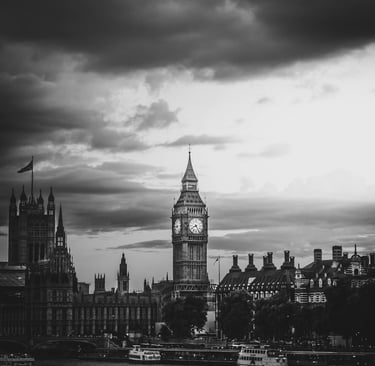Copyright of Iconic Landmarks
PHOTOGRAPHY PERSPECTIVES


The Hollywood Sign - The Hollywood Chamber of Commerce holds the copyright to photos of the sign taken for commercial purposes.
The Freedom Tower - The owners of the World Trade Center hold the copyright to photos of the tower, although non-commercial use is generally unrestricted.
The Grand Canyon Skywalk - The owners of the Skywalk hold the copyright to photos of the attraction.
EUROPE
Eiffel Tower, Paris, France - The Eiffel Tower has copyright restrictions on its nighttime illuminations, which means that commercial use of photographs taken at night require permission from the Société d'Exploitation de la Tour Eiffel (SETE).
The Atomium, Brussels, Belgium - This iconic structure representing an iron molecule is protected by copyright and commercial use of photographs requires permission from the Atomium's management.
The Shard, London, UK - Photographs of this modern skyscraper are protected by copyright, and commercial use of images requires permission from the building's owners.
The Colosseum, Rome, Italy - The Colosseum is considered a monument of cultural heritage in Italy, and thus, photographs of the Colosseum can only be used for non-commercial purposes without permission.
The Sagrada Familia, Barcelona, Spain - This famous cathedral is protected by copyright, and commercial use of photographs requires permission from the Sagrada Familia's management.
The Brandenburg Gate, Berlin, Germany - The Brandenburg Gate is a symbol of German unity and is protected by copyright. Commercial use of photographs requires permission from the gate's owners, the Berlin Senate.
The Palace of Versailles, Versailles, France - The Palace of Versailles is a UNESCO World Heritage Site and photographs of the palace and its grounds are protected by copyright. Commercial use of images requires permission from the Palace of Versailles' management.
The Leaning Tower of Pisa, Pisa, Italy - The Leaning Tower of Pisa is a popular tourist attraction and photographs of the tower are protected by copyright. Commercial use of images requires permission from the tower's owners, the Opera della Primaziale Pisana.
The Acropolis, Athens, Greece - The Acropolis is a UNESCO World Heritage Site and photographs of the ancient site are protected by copyright. Commercial use of images requires permission from the Greek Ministry of Culture.
The Anne Frank House, Amsterdam, Netherlands - The Anne Frank House is a museum and memorial dedicated to the Jewish wartime diarist Anne Frank. Photographs of the interior of the house are protected by copyright, and commercial use of images requires permission from the Anne Frank House's management.
ASIA
The Taj Mahal, Agra, India - Photographs of the Taj Mahal are protected by copyright, and commercial use of images requires permission from the Archaeological Survey of India.
The Great Wall of China: While it is difficult to enforce copyright over the Great Wall of China, commercial photography and videography may require permission from the Chinese government.
The Forbidden City, Beijing, China: The Palace Museum holds the copyright for all images taken of the Forbidden City and requires permission for commercial photography.
Angkor Wat, Cambodia: The Apsara Authority controls photography at Angkor Wat and requires permission for commercial photography.
Mount Fuji, Japan: While there is no copyright on Mount Fuji, some commercial photography may require permission from local authorities.
The Great Buddha of Kamakura, Japan: The temple that houses the statue of the Great Buddha holds the copyright and requires permission for commercial photography.
The Merlion, Singapore: The Merlion is owned by the Singapore Tourism Board, which allows photography for personal use but requires permission for commercial use.
Petronas Twin Towers, Malaysia: The Petronas Twin Towers are owned by Petronas, which allows photography for personal use but requires permission for commercial use.
The Burj Khalifa, Dubai, UAE: The Burj Khalifa is owned by Emaar Properties, which allows photography for personal use but requires permission for commercial use.
The Forbidden City, Lhasa, Tibet: The Chinese government holds the copyright for all images taken of the Forbidden City in Lhasa and requires permission for commercial photography.
It's important to note that this list is not exhaustive, and copyright restrictions can vary depending on the country and location. As a general rule, it's always best to research the copyright laws and restrictions for a particular landmark before using photographs for commercial purposes.
It's important for street photographers to be aware of these copyright and permission restrictions, as violating them can result in legal consequences. In addition, some landmarks may have specific rules regarding photography, such as restrictions on tripods or use of flash, that must be followed.
In some cases, it may be possible to obtain permission for commercial use of images of copyrighted landmarks. However, this process can be time-consuming and may require payment of fees. For this reason, it's best to research any restrictions or copyright laws related to a particular landmark before photographing it.
Ultimately, street photographers should aim to respect the laws and regulations surrounding landmark photography, while also seeking to capture unique and compelling images that showcase their creativity and vision. By being aware of these restrictions and taking them into account when planning their shoots, photographers can ensure that their work remains legal and ethical, while still capturing the beauty and majesty of some of the world's most iconic landmarks.
© 2024 Peter Pickering
USA
The Statue of Liberty - The National Park Service holds the copyright to all photos of the statue taken during daytime hours. Nighttime photos are generally unrestricted.
The Gateway Arch - The Gateway Arch National Park holds the copyright to photos of the arch taken from certain angles and in certain lighting conditions.
The Golden Gate Bridge - The bridge's architect and his estate hold the copyright to photos of the bridge taken during daylight hours.
The Seattle Space Needle - The Space Needle Corporation holds the copyright to all commercial photos of the needle, although non-commercial photos are generally unrestricted.
Mount Rushmore - The National Park Service holds the copyright to photos of the monument, but generally allows non-commercial use.
The Empire State Building - Photos of the building's exterior are generally unrestricted, but commercial photography from the observation deck requires a permit.
The Chrysler Building - The building's owners hold the copyright to commercial photos of the building's exterior.




